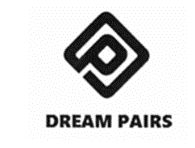Iconix Luxembourg Holdings SARL, the proprietor of the Umbro brand ('Iconix') brought trade mark infringement proceedings in the UK High Court against Dream Pairs Europe Inc and Top Glory Trading Group Inc ('Dream Pairs'). Mr Justice Miles held that Dream Pairs had not infringed Iconix's trade marks.
Background
Iconix is the proprietor of the 'Umbro' brand, a famous sportswear brand used by professional football and rugby teams in the UK. For example, Alan Shearer and Michael Owen have worn Umbro branded boots. Iconix relied on trade mark registered for various goods including for footwear and shown below (the 'Marks'):
UK trade mark 991668

UK trade mark 00903266459

The defendants had registered the below mark and have used it with or without the words Dream Pairs for football boots, other active footwear and non-sport footwear (the 'Sign').

Dream Pairs use of their Sign in the UK was almost exclusively by offering for sale their footwear through the Amazon UK website since December 2018. Iconix brought a claim for infringement under sections 10(2) and 10(3) of the Trade Marks Act 1994.
The Law
Miles J restated the six requirements for infringement under section 10(2) as set out by Arnold J in Sky v Skykick2 as:
(a) there must be use of a sign by a third party within the UK;
(b) the use must be in the course of trade;
(c) it must be without the consent of the proprietor of the trade mark;
(d) it must be of a sign which is at least similar to the trade mark;
(e) it must be in relation to goods or services which are at least similar to those for which the trade mark is registered; and
(f) it must give rise to a likelihood of confusion on the part of the public.
In trade mark law, questions of similarity and likelihood of confusion are considered from the perspective of the notional 'average consumer'.
Miles J referred to the principles developed by the court in relation to the assessment of a 'likelihood of confusion' such as confusion being appreciated globally, taking into account all factors; the average consumer being deemed to be reasonably well informed and reasonably circumspect; that the average consumer perceiving a mark as a whole and not needing to proceed to analyse various details; that there is a greater likelihood of confusion where the earlier mark has a highly distinctive character; that the reputation of a mark does not give grounds for presuming a likelihood of confusion; and if the association between the marks causes the public to wrongly believe that the goods come from the same or economically-linked undertakings there is a likelihood of confusion.
Miles J referred to the below nine requirements for infringement under section 10(3):
(a) the trade mark must have a reputation in the UK;
(b) there must be use of a sign by a third party within the UK;
(c) the use must be in the course of trade;
(d) the use must be without the consent of the proprietor of the trade mark;
(e) the use must be of a sign which is at least similar to the trade mark;
(f) the use must be in relation to goods or services;
(g) the use must give rise to a "link" between the sign and the trade mark in the mind of the average consumer;
(h) the use must give rise to one of three types of injury, that is to say:
(1) detriment to the distinctive character of the trade mark; (2) detriment to the repute of the trade mark; or (3) unfair advantage being taken of the distinctive character or repute of the trade mark; and
(i) the use must be without due cause.
The Decision
In relation to the Umbro brand, Miles J found that it has a substantial reputation for football boots and kit, that it is less well known for sportswear than other brands such as Lacoste, Converse or Fred Perry and that it was associated by the UK public with sports discounters, and that it does not enjoy a special reputation for high-end or high-quality goods.
The Sign used by Dream Pairs, was conceived of by Mr Cao, who founded the defendants. He visualised the logo as an outer 'D' and an inner 'P' to refer to the initials 'DP' of the words Dream Pairs.
Iconix's main complaint was the presentation of the Dream Pairs Sign when advertised on the Amazon UK website. Potential customers to the Amazon UK website will see the Dream Pairs shoe and thus the Sign with or without the words 'Dream Pairs' from different angles, including some where the image is seen at an angle, where they alleged it looked more like the Marks. Sales of the defendants' products on the Amazon website was always identified under the brand name 'Dream Pairs'.
The issues in relation to the section 10(2) claim related to:
- whether the Sign is at least similar to the trade mark; and
- whether there is a likelihood of confusion on the part of the public.
Miles J considered that the average consumer would exercise a moderate degree of attention, that the Dream Pairs Sign is used in relation goods which are at least similar to those for which the Marks are registered. Further, Miles J considered that the Marks would be perceived as flat, elongated, diamonds and not as tilted squares, whereas the Sign is a square shape with rounded corners, tilted through 45 degrees so that it sits on one of its corners, with a break in the outer element.
Miles J held that there is at most, a very low degree of similarity between the Marks and the Sign - that 'it is very faint indeed.' He also considered that the Marks had been used extensively in high profile sporting events and that they have high distinctive character. Given the use of the Sign on Amazon by Dream Pairs was in conjunction with references that the products originated from Dream Pairs, Miles J considered that this tended against a finding of confusion by the average consumer and on a global assessment, Miles J held that there is no likelihood of confusion among a significant proportion of the public interested in the goods and stated that the section 10(2) claim failed.
The issues in relation to the section 10(3) claim were as follows:
- the existence of a link; and
- the existence of one of the three types of injury.
Having considered all the relevant factors Miles J held that those factors would not outweigh the very faint similarity between the Sign and the Marks and therefore that the Sign would not give rise to a link.
Miles J went on to consider the three types of injury otherwise known as 'dilution', 'tarnishment' and 'free riding'.
In relation to dilution, he stated that there was no evidence to establish a risk that the use of the Sign had or would erode the power of the Marks to identity footwear made by Iconix, nor any evidence that Dream Pair's use of the Sign would lead to a change in the economic behaviour of Iconix's consumers.
In relation to the Iconix's 'tarnishment' claim, Iconix's argument was that they have no control over the quality of goods provided by Dream Pairs under the Sign and that this risks damaging the distinctive character and/or reputation of the Marks. As Iconix had no relevant evidence, Miles J dismissed this argument.
In relation to 'free riding', Iconix claimed that by reason of the similarity between the Sign and that Marks the average consumer will believe that the Dream Pairs footwear would have the same characteristic of fit, performance and/or durability as footwear sold under the Umbro brand. Again, Miles J held that Iconix had not established that Dream Pairs had or would obtain any relevant advantage, that there is no basis that the average consumer would believe that goods bearing the Sign would have the same characteristics, that Iconix had failed to establish advantage, and also failed to show relevant unfairness or that there would be a change in the economic behaviour of the Dream Pairs customers.
Miles J therefore held that Iconix's section 10(3) claim failed.
Comments
This case serves as a reminder of the limits of a finding of trade mark infringement even where the trade mark asserted is held to have high distinctive character and has substantial reputation. The key was the finding of a very low degree of similarity between the Sign and the Marks and the manner in which the Sign was used on the Amazon UK website, which was always in conjunction with the words 'Dream Pairs'.
Finnegan's International group of trade mark attorneys in the UK and China assisted in the strategic management of the defendants' case, working alongside solicitors at Stobbs IP and barrister Theo Barclay, to secure a positive outcome before the UK courts.
The content of this article is intended to provide a general guide to the subject matter. Specialist advice should be sought about your specific circumstances.

